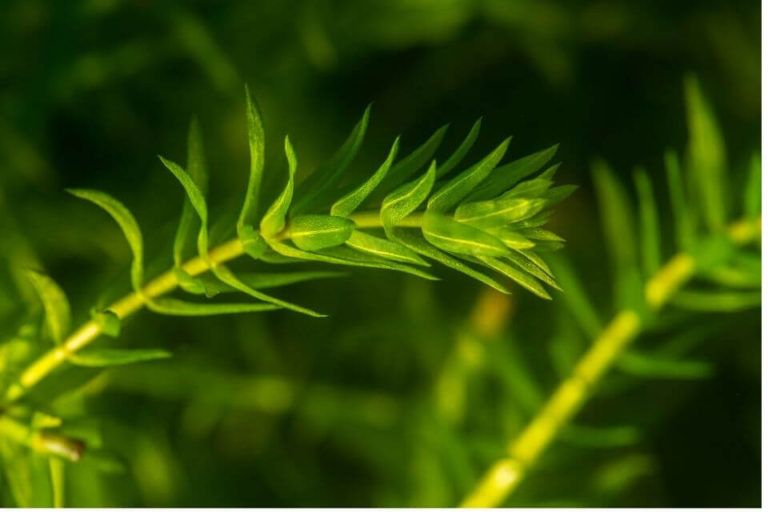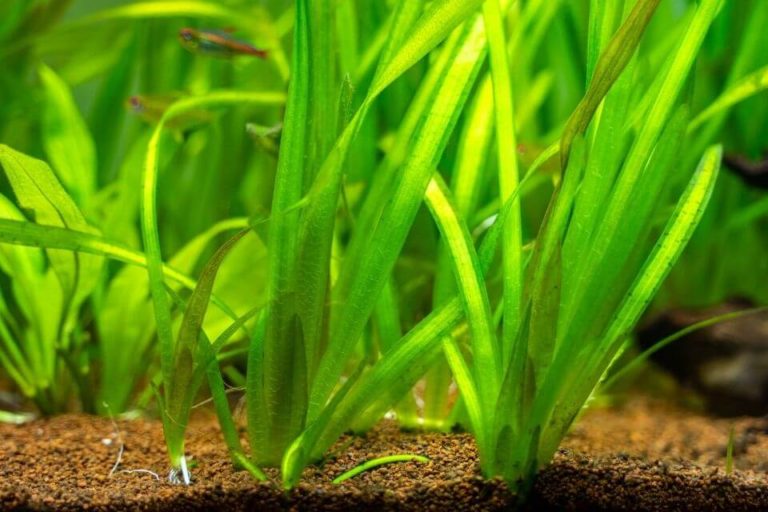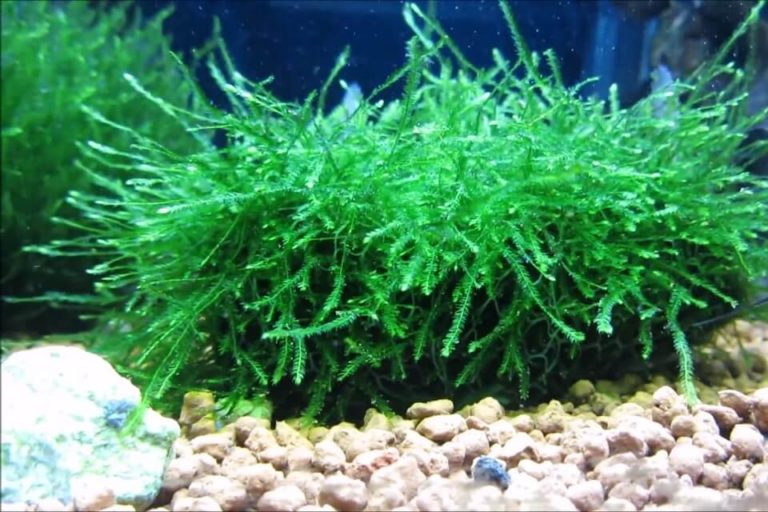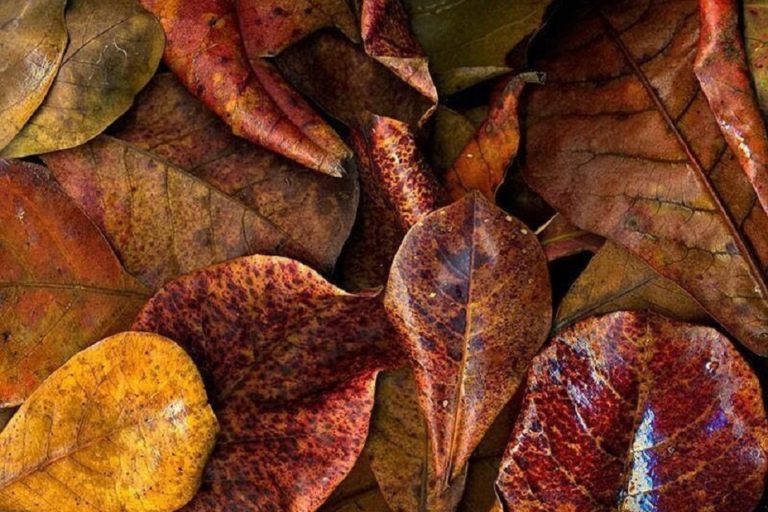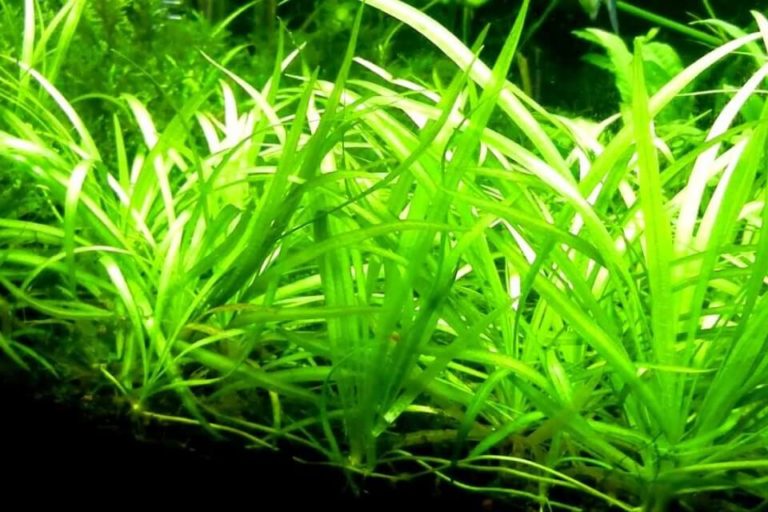Dwarf Hairgrass Plant: Complete Guide to Care, Planting and Propagation
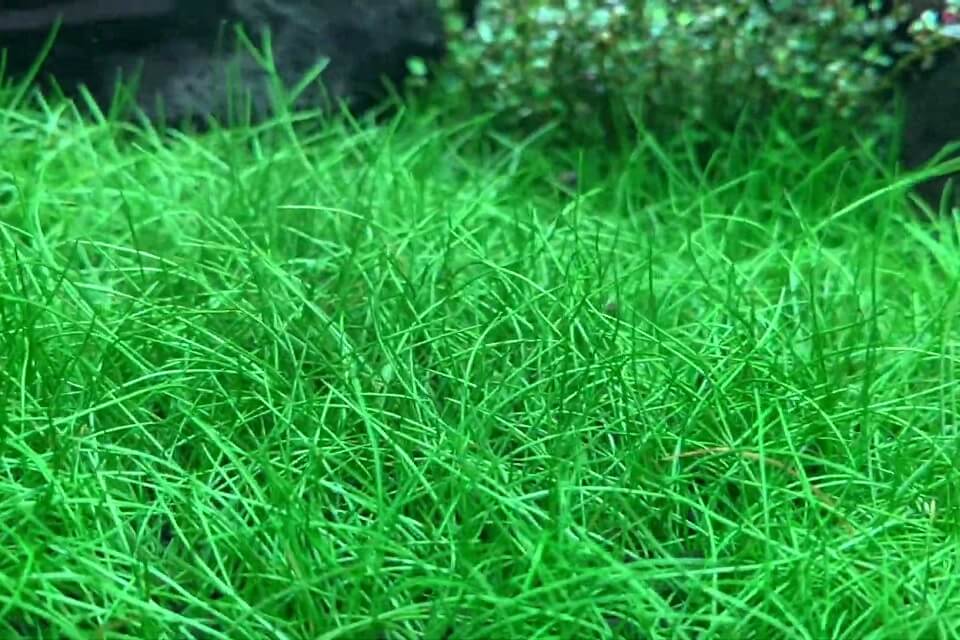
If you have been dreaming of having a professional-looking aquascape, you will definitely need to try one of the best carpet grass species available. One of the best carpet grasses is known as Dwarf Hairgrass.
this species of live plant add oxygen to the water in your aquarium, removes contaminants, and shelters the fish at the bottom. The Dwarf Hairgrass has a green-like appearance that makes a green bed at the bottom. The plants come in different shapes and sizes and this sometimes can be hard for you to choose.
This plant is a hardy plant and adaptable to various aquarium conditions. That makes it easy for those who haven’t had enough experience in handling them. Many people make a wrong approach to planting and taking care of these plants that affect the overall growth.
That is why you need to know the basic tricks for taking care of them to have the desired aquarium look. This is the commonly used aquarium plant due to the beauty that it comes with and how easy it is to care for.
In this article, we are going to discuss everything about the Dwarf Hairgrass plant and how you can easily maintain them to achieve a professional-like look in the aquarium.
| Quick Facts: | |
|---|---|
| Common Names | : Dwarf Hairgrass |
| Scientific Name | : Eleocharis acicularis, Eleocharis parvula |
| Family | : Cyperaceae |
| Origin | : South America |
| Care Level | : Easy |
| Growth Rate | : Rapid |
| Size | : 4 to 6 inches height |
| Growth Conditions | : Submersed |
| Propagation | : Runners |
| Placement | : Buried in the substrate |
| Substrate | : Sand or Aqua soil |
| Lighting | : Medium |
| Minimum Tank Size | : 10 gallons |
| Water Condition | : Freshwater |
| Temperature | : 50 °F - 85 °F (10 °C - 29 °C) |
| Water Hardness | : 2 - 10 dGH |
| Water pH Level | : 6.5 - 7.5 |
| CO2 Level | : Medium |
Overview of Dwarf Hairgrass
Dwarf Hairgrass resembles a lawn due to its short, bright green and string-like leaves. They sprout to about 4 to 6 inches in height. The roots grow underneath the substrate where they form a solid carpet as the plants grow.

These plants do not demand much from you, though you will still require to maintain them regularly and keep them healthy. They are mostly found in the aquarium industry.
There are three species of Dwarf Hairgrass that are very similar namely;
- Eleocharis Acicularis – grows slightly taller and develops a curly form.
- Eleocharis Parvula – also known as dwarf spike-rush, grows faster and has a good maximum height.
- Eleocharis Belem – similar to Eleocharis Acicularis, grows slowly and doesn’t extend much.
The plants are similar in looks and this confuses people when buying and that is why you should be careful not to pick the wrong one in the fish stores. Dwarf Hairgrass is more friendly for beginners; hence you will have no difficulties taking care of them. The requirements of these plants are just light, nutrients, and carbon dioxide.
Dwarf Hairgrass uses its strands that resemble hair for photosynthesis. The plants have white roots that are almost invisible when planted. For people who love adding colors to the tank bottom, this type of Hairgrass is the best choice.
Fish enjoy the beautiful space around them since the Dwarf Hairgrass has a light green color that looks stunning when reflected by the lights of the aquarium. This type of plant has various uses as outlined below:
- It helps in cleaning the water by clearing the pollutants and also oxygenates the water.
- The greatest use for these plants is a shelter for bottom-dwelling fish.
- It acts as a source of food for the fish in the aquarium
Origin, Distribution, and Availability
Dwarf Hairgrass originated from South America and later spread to most parts of the world like Asia, Europe, North America, and Australia. These plants are in high demand due to their popularity and this makes them easily available in most stores.
They are available at affordable prices and a small portion of this grass will cover a large area in the tank. Be careful to look out for any brown colorations because they indicate that the plants are unhealthy. The roots should be long enough so as to absorb nutrients in the tank.
Planting Dwarf Hairgrass
After you finally decide that you want to plant this species of plants, ensure that you have everything required for you to plant them. In order for you to have great results when planting Dwarf Hairgrass, there are important steps that you need to follow as I have explained below:
- The substrate should be soft to prevent the roots from being damaged by the grains.
- Prepare the place you want to store the plants after you have found the soft substrate in place.
- Place the carpet species at the bottom of the tank; you can choose to fully cover the bottom of your tank with this plant.
- Trim the plants of the front so as to appear shorter than the ones at the back.
- Dwarf Hairgrass doesn’t work well in places that are shaded and this requires you to look for a place that has a lot of light for it to photosynthesize well.
- Burry the roots completely in the substrate and let the blades stay above the substrates.
Dwarf Hairgrass Care and Maintenance
This is one of the easiest plants to care for and maintain, therefore, it shouldn’t give stress you on how to go about the maintenance. When the blades become too long, you can trim them into the shape you like.
The blades grow faster and this requires you to trim them often. You can keep it short at the front and longer at the back to enable the fish to have a place to hide. This will not prevent you from having a clear view while looking through the aquarium.
Ensure that even with enough light, the plants have enough carbon dioxide and the nutrients required for their growth. You can add on some supplements from stores and ask about the effects that they contribute to the growth of algae and fish.
The algae growth is an indication that your plants are lacking some nutrients. You can buy algae eaters to help clear them from the aquarium.
These plants require 10 gallons tank size since they are small plants designed for the bottom of the tank. The temperatures of the water should be between 50 to 85 °F. This plant distributes widely because they are able to survive in cool waters.
The Dwarf Hairgrass thrives in a neutral environment whereby the water is neither too acidic nor too alkaline. The pH needs to be around 6.5 to 7.5 for effective growth. Water hardness should be around 2 to 10 dGH.
As I said earlier, light is important when it comes to planting this species so consider buying lights to enhance the lighting you need. Most stores sell the best lights that help in the growth of this plant.
- Temperature: 50 – 85 °F (10 – 29 °C)
- Water pH: 6.5 – 7.5
- Water hardness: 2 – 10 dGH
Dwarf Hairgrass Propagation
The propagation of this plant is quick but you are not able to easily control the propagation process. Many aquariums allow a speedup of the process by cutting them and planting them in other places.
However, you cannot cut Dwarf Hairgrass to transfer it to other places since, after the cut, they can’t grow their own roots. The plant develops its own roots by forming runners and branching off at the root area.
The runners are formed regularly and this makes the carpet spread over the whole tank in a short time since Dwarf Hairgrass grows so fast. If you find that the plants are not spreading as fast as you would like them to, you can add the supplements found in the stores to provide them with the nutrients they require.
This will definitely contribute to quick growth. You should also try raising the temperatures of water within the required limits to help speed up the growth rate.
Compatibility and Tank Mates with Dwarf Hairgrass
This plant has little or no problem when it comes to compatibility. It can be grown together with other types of plants and tropical fish without difficulties. If you mix Dwarf Hairgrass with other plants in your tank, consider controlling the density.
Plants tend to compete for resources when growing in a dense carpet. This can make the other plants gradually die since Dwarf Hairgrass wins in the fight over resources. Fish love biting plants that have broad leaves and this keeps Dwarf Hairgrass at an advantage due to their long strands that are not easily eaten.
The type of fish that you are to keep in the tank depends on your preference. Many people prefer small and peaceful fish since they are not likely to cause damage. Guppies, Mollies, Tetras, Paradise Fish, and Danios are some of the examples of fish that are suitable to choose from.
The bottom-dwelling fish benefit from this plant due to the carpet it forms in the tank. The types of fish that enjoy the shelter of Dwarf Hairgrass are:
- Bumblebee Catfish
- Clown Loaches
- Yoyo Loaches
- Zebra Loaches
- Pygmy Corydoras
Fish that have a tendency of uprooting plants while searching for food are not suitable for Dwarf Hairgrass plant, hence, they should be avoided. These types of fish are large and known to be energetic such as Oscars.
Avoid snails due to their tendency to tear through plants easily to avoid damaging the Dwarf Hairgrass plants. There is a type of snail known as the Assassins that has no tendency of eating through plants so you can choose to include them in the tank with the Dwarf Hairgrass plant.
Invertebrates for aquariums such as shrimps are suitable especially if they are healthy because they don’t really affect the plants in the tank.
Frequently Asked Questions
Here are answers to some of the common questions that people ask.
– Can Dwarf Hairgrass Grow Out of Water?
Yes, there are regions that you will find Dwarf Hairgrass growing on the land. In such a case, they require a lot of attention and maintenance to prevent the roots from drying.
Growing this plant on land is not as common as growing in the aquariums since they are naturally designed to be underneath water all their life.
– Are Dwarf Hairgrass Hardy?
Yes, the Dwarf Hairgrass plant is hardy and this makes it easy for it to adapt to almost any environment. They are easy to maintain and they provide a carpet bed for your aquarium. This is why they are the most commonly used worldwide. They are able to grow under very little care.
– Does Dwarf Hairgrass Spread?
It spreads out in a thick carpet grass since it uses its runners that form as it grows to spread in the aquarium. It covers the bottom of the tank giving shelter to fish that live at the bottom of the tank. Dwarf Hairgrass is suitable for beginners since it spreads faster than other plants helping you to reduce maintenance.
– How Do Dwarf Hairgrass Reproduce?
The Dwarf Hairgrass propagates on its own and this requires them to first send runners off so that they are able to reproduce. If you cut the plants with the aim of reproducing, they will not grow other roots.
Once the runners are sent off, you can then wait for the blades to develop. You can then cut off the runners from the mother plant and plant it to some other place. This tactic, however, is not suitable for Dwarf Hairgrass reproduction.
– Is Dwarf Hairgrass Easy To Grow?
Dwarf Hairgrass is easy to grow since it does not require a lot of attention after preparation and planting. You maintain it regularly and watch as it grows smoothly. The only problem would be if your plants are lacking the required nutrients and lighting.
If these factors are in check, you will have no difficulties while growing them.
– How Long Does It Take For The Dwarf Hairgrass Plant To Root?
Aquarium plant seeds may take 5 to 10 days to sprout. If there is enough light and the right nutrients, the plants may take 6 to 8 weeks to grow and then you can give it a few more weeks for the carpet to completely cover the surface.
It may not take long to fully grow when you separate the clumps and plant it few inches apart.

– Can I Grow Dwarf hair Grass Without CO2?
Carbon dioxide is usually present in the water, therefore, you don’t need to add any to the aquarium plants when growing. However, if the water parameters are not the required ones, you will need to add CO2 to the plants so as to enhance healthy growth.
– Can I Grow Dwarf hair Grass In Gravel?
Yes. You can grow this aquarium plant in the gravel after you have considered some key things. When planted in gravel, this plant takes a long to grow since the runners find it hard to spread and form a carpet. You will notice that the runners spread fast in the sand as compared to the gravel.
– How Much Light Do You Need For Dwarf Hairgrass?
You need as much light as you can get. In places where there is no enough light, People go to an extent of buying more lighting products for their aquarium to enhance the lighting. Enough light is required for a healthy aquarium plant.
The average light time should be 10 to 12 hours per day for the aquarium plants to thrive. It is important to have a consistent day and night cycle of lighting since more hours of lighting do not compensate for weak light.
You should get a timer to help you keep a good cycle of lighting. Giving them too much light also contributes to the growth of algae which is not good for the plants.
– Will Dwarf Hairgrass Plant Grow On Driftwood?
You can plant Dwarf Hairgrass on driftwood by drilling a hole using thick fine stuff and place your plant. It doesn’t really grow out, but you are able to see it in the hole.
– Is Dwarf Hairgrass A Root Feeder?
Aquarium plants are enthusiastic root feeders. You can add nitrates to the top of the substrate to help them absorb without being affected by the algae. This plant leans towards the roots and this is the reason they require much light.
– Should I Trim My Dwarf Hairgrass?
You can trim your aquarium plants when you notice their blades are too long. Trimming the front side of the plant and leaving the back allows the fish to have someplace to shelter. Regular trimming when necessary is important to keep the plants at the desired shape and size you want.
Final Thoughts
This aquarium plant is a great choice for beginners who love aquariums. Since they don’t demand too much from you, you are able to plant them on a small tank, can tolerate different water parameters and they make it easy to maintain them with ease.
Buying these aquarium plants is easy since they are easily available in fish stores. Though they can be confusing for many when it comes to choosing the right type, you can always seek assistance and settle on the aquarium plants of your choice.
A full-grown carpet looks really nice through the aquarium. Once you acquire all the requirements for planting these plants, you can sit and watch the professional-like aquarium turn your space into a whole new place.



